The typical size of a parlor can vary based on its intended use. A cozy parlor is 270 square feet (25 square meters) to 375 square feet (35 square meters) with high ceilings 8 feet (2.4 meters) to 9 feet (2.7 meters). The typical shape of a parlor can be a rectangle, square, or even more unique shapes like octagons or ovals, depending on the home’s layout and style. Furniture commonly found in a parlor includes sofas, armchairs, coffee tables, side tables, bookcases or cabinets, and console tables. Sofas are often the centerpiece, with classic designs and luxurious upholstery. Energy efficiency in a parlor can be achieved by using energy-efficient lighting and appliances, optimizing HVAC systems, reducing hot water usage, considering room size, and engaging everyone in energy-saving practices. Hiring an architect for a parlor renovation is not strictly required. Architects can assist with spatial planning, lighting design, material and color selection, custom furniture design, acoustics optimization, project management, and contractor coordination. The cost to hire an architect for a parlor renovation can range from $1,500 (€1,350, £1,150) to $5,000 (€4,500, £3,800), depending on the project’s scale and complexity. The duration needed to redecorate a parlor falls within a range of 2 to 3 weeks, depending on the scope of the project and various factors such as the complexity of the design, the size of the parlor, and the availability of materials and contractors. Homeowners’ struggles when redecorating a parlor include budget constraints, space limitations, finding the right furniture, choosing the suitable color scheme, balancing aesthetics and functionality, maintaining consistency with the rest of the house, and dealing with time constraints.
What is the typical size of a parlor?
A cozy typical parlor ranges from 270 square feet (25 square meters) to 375 square feet (35 square meters). It features 8 feet (2.4 meters) to 9 feet (2.7 meters) high ceilings. This allows space for seating like a 6-foot (1.8-meter) sofa and two 3-foot (1-meter) wide armchairs, a 5-foot (1.5-meter) long and 3-foot (0.9-meter) deep side table. The average family parlor measures 430 square feet (40 square meters) to 590 square feet (55 square meters) with 9-foot (2.7-meter) ceilings. Furnishings may include a 10-foot (3 meters) long couch, four 5 feet (1.5 meters) wide armchairs, a table set 4 feet (1.2 meters) across, a hutch cabinet 8 feet (2.4 meters) tall, and 4 feet (1.2 meters) wide. A large parlor spans 750 square feet (70 square meters) to 1,075 square feet (100 square meters) with 10-foot (3-meter) ceilings. The space contains multiple ornate couches 8 feet (2.4 meters) long, chairs 6 feet (1.8 meters) wide with curved legs, a grand piano taking up 55 square feet (5 square meters), towering 9 feet (2.7 meters) cabinets, and seating for over thirty guests during elite social balls and dinners.
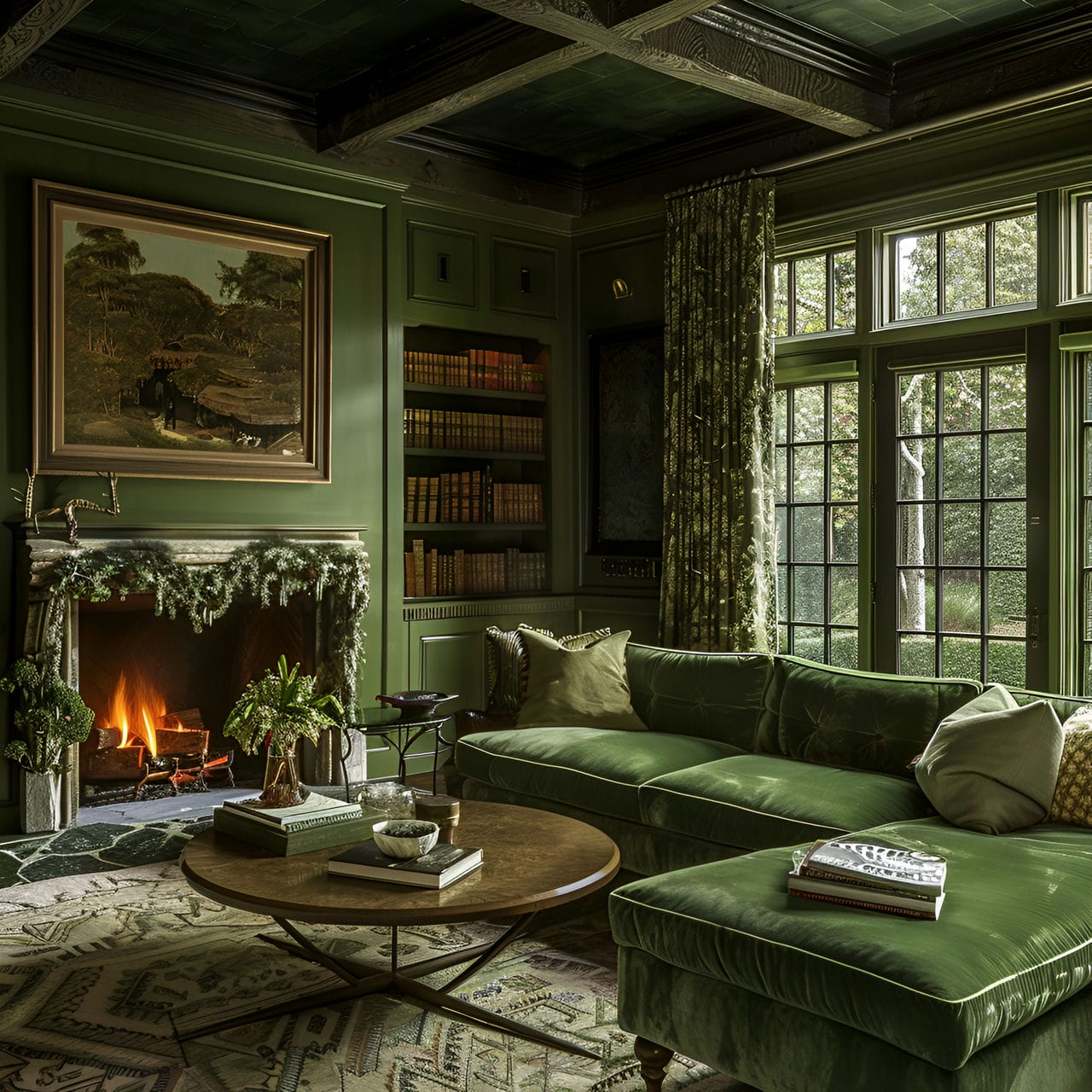
What is the use and purpose of a parlor?
The purpose of a parlor is to provide a formal sitting area for entertaining guests, a display space for art and antiques, a venue for special occasions, and a retreat for activities. Firstly, it functions as a formal sitting area. This space is often reserved for entertaining guests, distinct from more casual family living areas. The layout and furnishings reflect a traditional ambiance suitable for hosting visitors or conducting essential discussions. Secondly, a parlor often acts as a showcase for household tastes and valuables. It may display fine art, antiques, or other items of interest, reflecting the homeowners’ style and interests. Thirdly, the room serves as a space for special occasions. In many households, the parlor becomes the focal point during events like receptions or celebrations, providing a designated area for gathering and socializing. Lastly, parlors were used for more solemn purposes, such as hosting wakes or important family meetings, underlining their role as versatile spaces in a home’s social life. A parlor can function as a quiet retreat within the home.
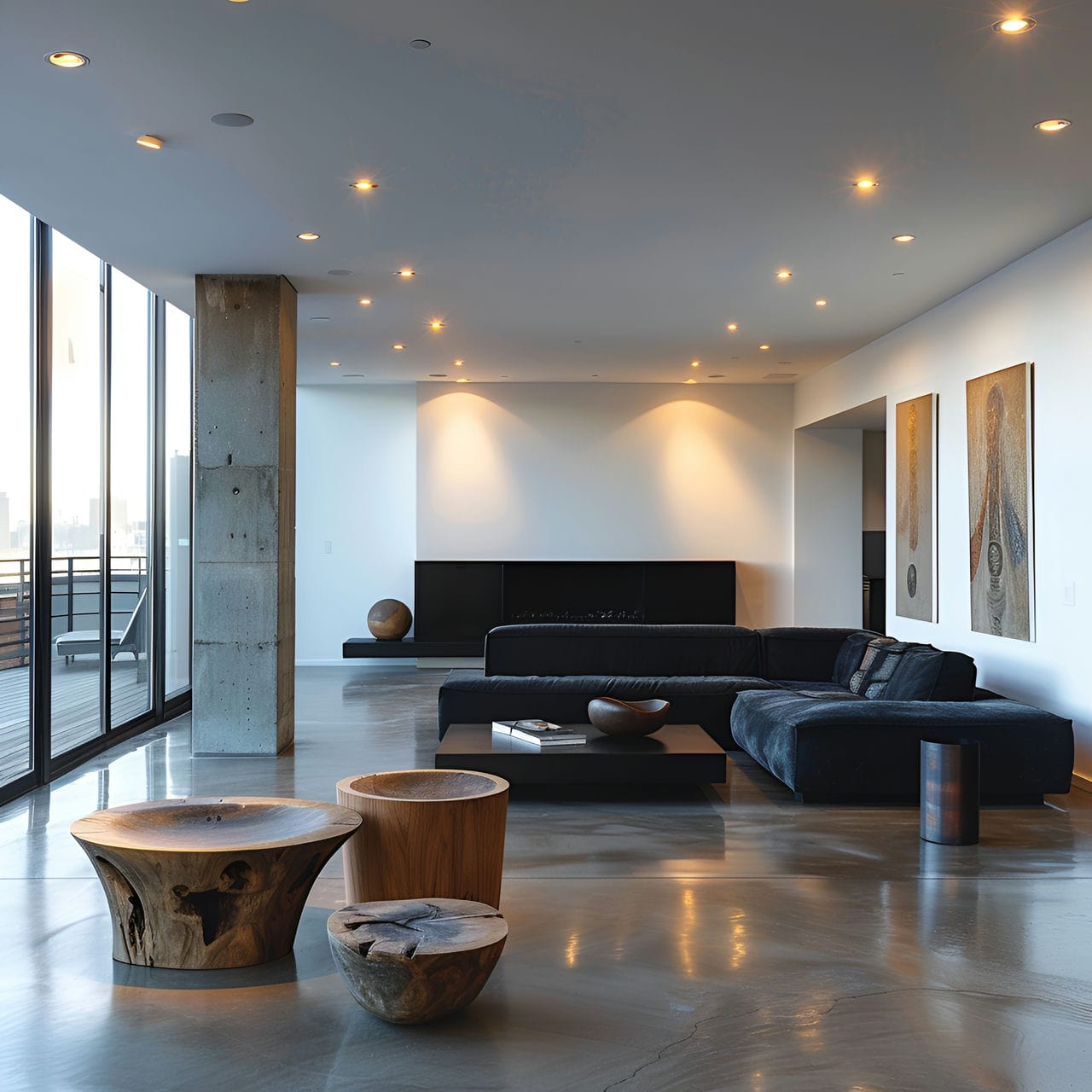
What is the typical shape of a parlor?
The typical shape of a parlor is a rectangle, ranging from 43 square feet (4 square meters) to 65 square feet (6 square meters) in floor space. This rectangular layout fits parlors into narrow urban row houses or positions them next to adjoining spaces like foyers and sitting rooms. Another classic parlor shape is a square ranging from 32 square feet (3 square meters) to 54 square feet (5 square meters). More shaped parlors may also include octagons and ovals, ranging from 38 square feet (3.5 square meters) to 70 square feet (6.5 square meters). In smaller historic homes, parlors may squeeze into even more petite rectangular rooms under 43 square feet (4 square meters). Grand manor parlors can sprawl in an open layout, reaching up to 97 square feet (9 square meters).
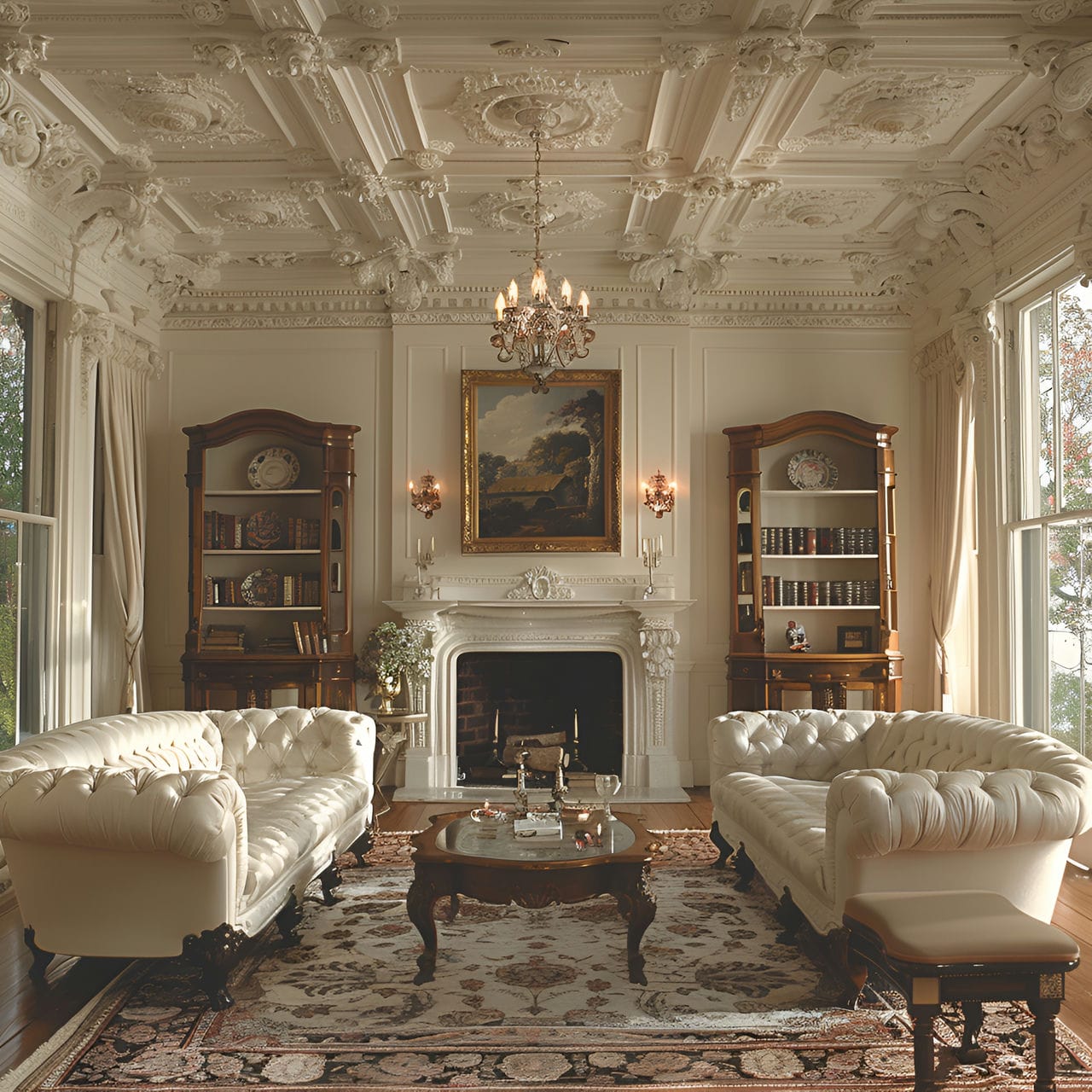
What furniture commonly equips a parlor?
Listed below are the types of furniture commonly equip a parlor:
- Sofas: Sofas are the centerpiece of furniture in the parlor, offering seating to the parlor aesthetic. The sofas are designed for comfort and elegance, with plush cushions and a sturdy frame, often made of wood with carvings. Their size and style vary, but they are substantial enough to accommodate multiple people, making them ideal for social gatherings.
- Armchairs: Armchairs are essential furniture pieces that complement the sofas and provide additional seating in parlors. These armchairs often mirror the style of the sofas, with matching upholstery and design details. They have a robust wooden frame and ornate carvings and are upholstered with high-quality fabric.
- Coffee tables: Parlor coffee tables serve as central furniture for placing decorative items or refreshments. They are put in front of the sofa and are made of fine wood, glass, or a combination. These tables can have ornate designs, including carved legs and decorative inlays, aligning with the parlor’s elegant aesthetic.
- Side tables: Parlor side tables are smaller furniture pieces placed beside sofas and armchairs for convenience. They provide a surface for lamps, books, or small decorative items. Made from wood or metal, these tables often have designs that match the room’s decor.
- Bookcases or cabinets: Parlor bookcases or cabinets are functional furniture pieces that offer storage and display space. They are crafted from high-quality wood with glass doors or open shelving. These bookcases or cabinets can house books, collectibles, or decorative items, contributing to the room’s intellectual and refined atmosphere.
- Console tables: Parlor console tables are slender, decorative furniture pieces, often placed against a wall or behind a sofa. They display decorative items or hold lighting fixtures like table lamps.
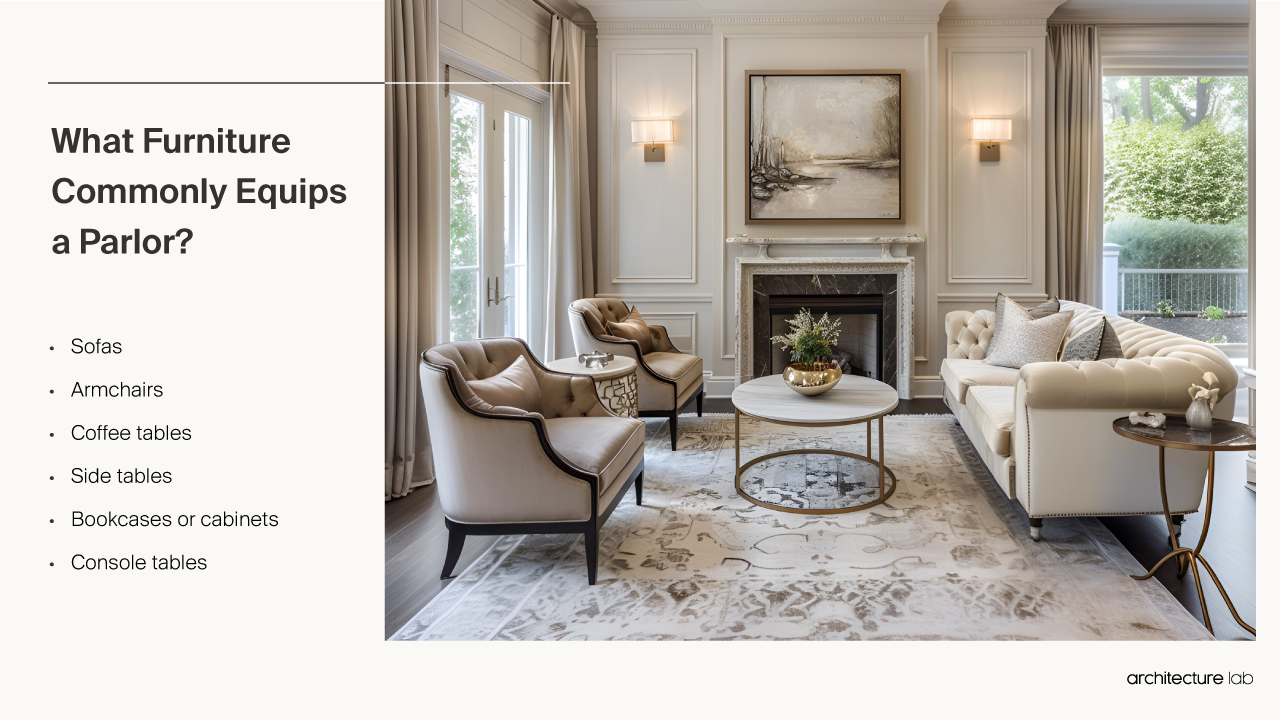
What is the normal ceiling height of a parlor?
The normal ceiling height of a parlor ranges from 8 feet (2.4 meters) to 12 feet (3.6 meters). In historic homes, parlor ceiling heights tend towards 8 feet (2.4 meters) to 10 feet (3 meters). More recently built suburban parlor ceilings are often 9 feet (2.7 meters) to 10 feet (3 meters). Luxury homes and mansion parlors may have ceilings from 10 feet (3 meters) to 12 feet (3.6 meters) for a grand, stately style accommodating large windows, intricate moldings, and chandeliers. The most common compromise parlor ceiling height is 10 feet (3 meters) to 11 feet (3.3 meters)—high enough for good light and proportions but not too tall for a casual family space.
What colors are parlor rooms usually painted?
Listed below are the colors usually used in parlor rooms:
- Classic Ivory: Parlors are often painted in Classic Ivory, a color with a high Light Reflectance Value (LRV). This hue offers warmth and brightness, enhancing the room’s elegance. Classic Ivory’s slight yellow undertone complements natural light, providing a backdrop for antique and modern furnishings.
- Deep Burgundy: Deep Burgundy, a color with low LRV and high saturation, is chosen for its luxurious effect in parlors. Its position on the color wheel aligns closely with the red-violet spectrum, which is ideal for a formal and opulent setting.
- Regal Navy Blue: Regal Navy Blue, with its low LRV and strong saturation, is famous for a parlor’s setting. This deep blue shade, close to the blue-indigo spectrum, exudes a sense of depth and stability.
- Warm Taupe: Warm Taupe is a neutral, versatile color with a balanced LRV, commonly used in parlors. Its gray-brown hue provides a cozy and inviting atmosphere. Warm Taupe is an elegant backdrop, complementing various decor styles and color schemes.
- Hunter Green: Hunter Green, a deep, rich color with low LRV, is chosen for parlors for its tradition and appeal. This color works well with wood finishes and natural fibers, adding to the room’s classic feel.
- Soft Lavender: Soft Lavender, a color with moderate saturation, creates a parlor ambiance. It pairs with silver or gold accents and soft, plush fabrics.
- Antique Gold: Antique Gold, a color with a medium LRV and rich saturation, is used in parlors for its opulent and warm character. It complements dark wood furniture and ornate decor, reinforcing the parlor’s traditional elegance.
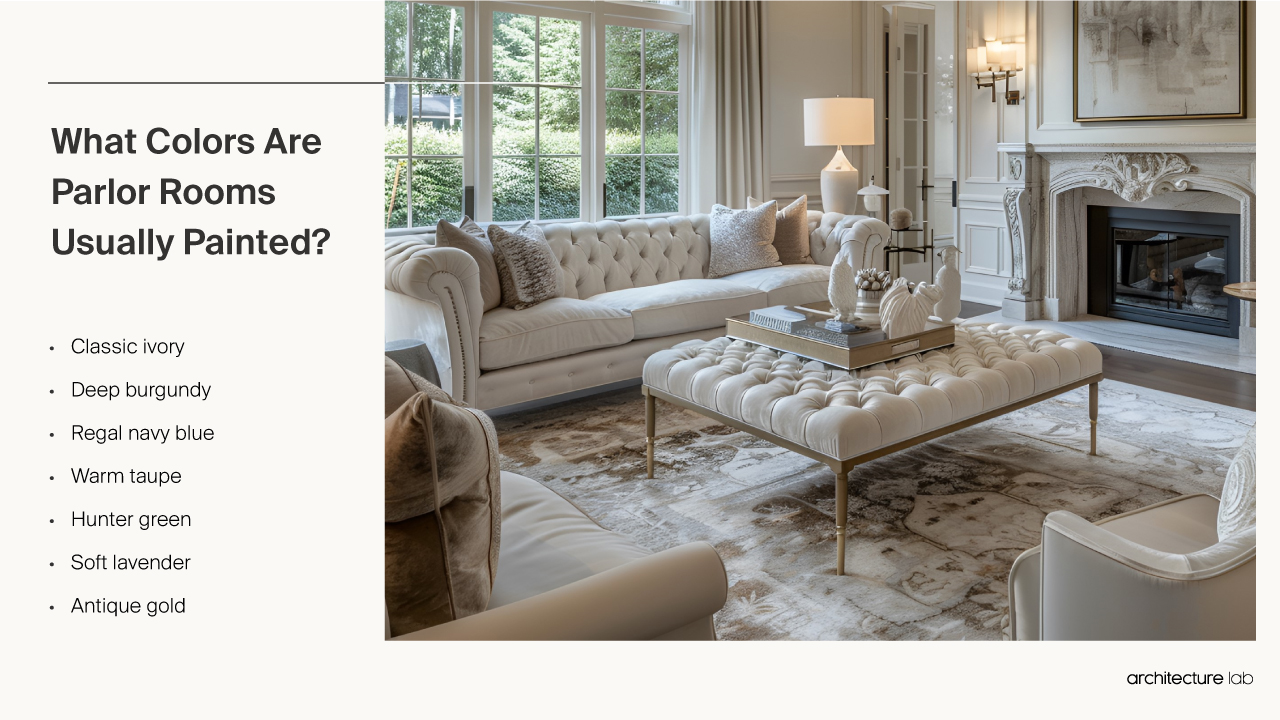
What makes the parlor functional?
The parlor is functional by its design, lighting, furniture selection, decor, versatility, acoustics, entertainment elements, and accessibility. Firstly, a well-designed parlor often features a layout that facilitates conversation, with furniture arranged to encourage guest interaction. Secondly, the lighting in a parlor plays a significant role. Proper lighting can enhance the ambiance, inviting the space for various activities, whether hosting guests or enjoying a quiet read. Thirdly, the furniture selection is critical to a parlor’s functionality. Comfortable seating like sofas, chairs, and appropriate tables provide the necessary infrastructure for various activities. Fourthly, a functional parlor can adapt to occasions, from formal gatherings to casual meetups. This adaptability is achieved through movable furniture and adaptable lighting. Lastly, accessibility and flow to and from the parlor are crucial. A parlor accessible from other parts of the house yet distinct enough to maintain its formal character balances functionality with exclusivity.
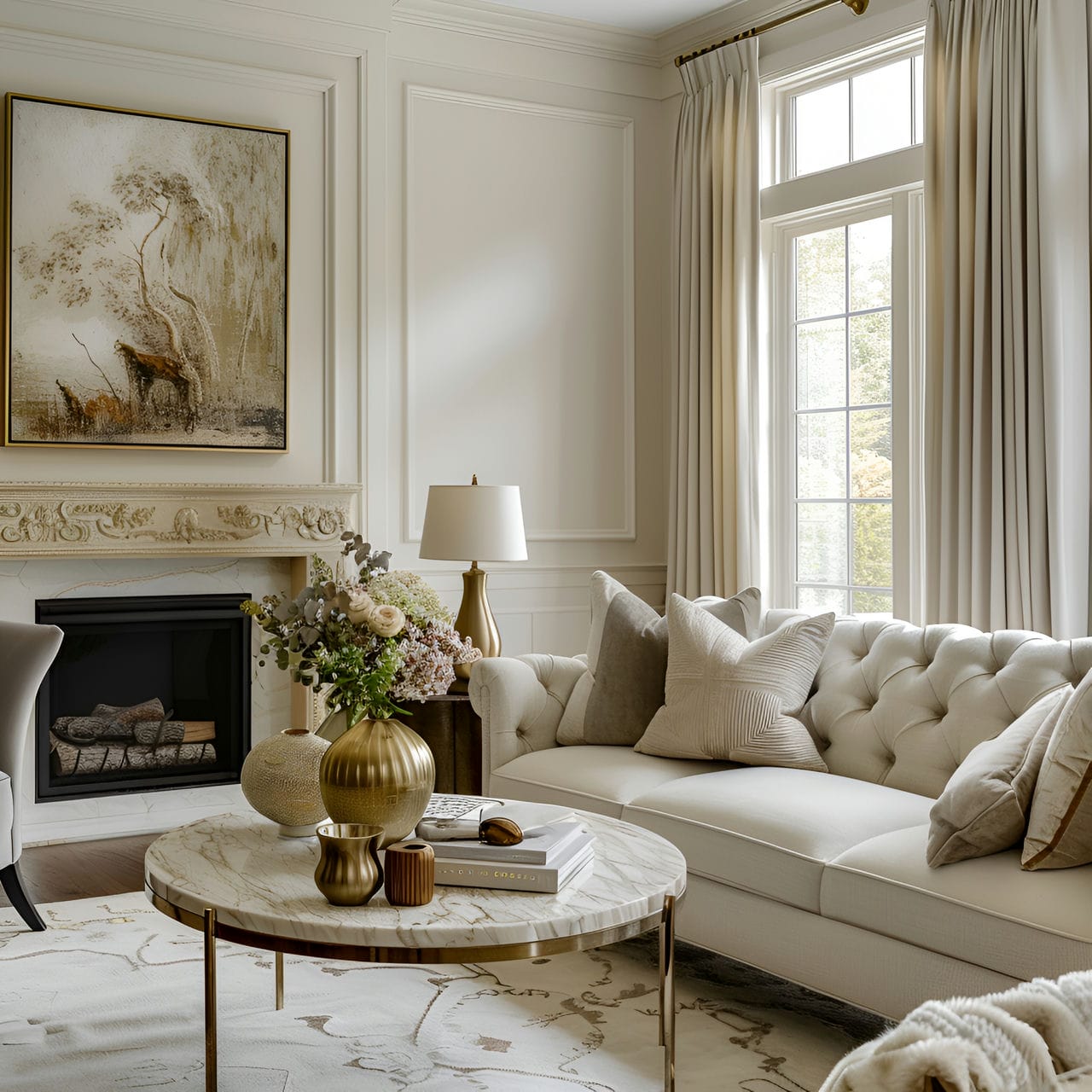
How is energy efficiency achieved in a parlor?
Energy efficiency is achieved in parlors by using energy-efficient lighting and appliances, optimizing HVAC systems, reducing hot water usage, and energy-saving practices. Firstly, using energy-efficient lighting is one of the most effective ways to improve energy efficiency. Traditional incandescent or fluorescent bulbs can be replaced with LED lights, which consume less energy and have a longer lifespan. Secondly, using energy-efficient appliances and greenhouses can reduce energy consumption. Appliances certified by recognized standards, such as Energy Star, are designed to use less energy without compromising performance. Thirdly, heating, ventilation, and air conditioning (HVAC) systems, notorious energy guzzlers, can be optimized to reduce energy wastage. Blinds, reflective window film, or awnings can help conserve heating or cooling. Fourthly, installing low-flow faucets and spray nozzles to restrict the water flow can reduce hot water usage. Fifthly, the size of the room can also impact energy efficiency. A larger room is more relaxed and requires less power to extract hot air, saving energy costs. Lastly, educating and engaging the team or household members on energy efficiency can contribute to energy savings. This can involve encouraging everyone to turn off lights and appliances when not in use and rewarding energy-saving efforts.
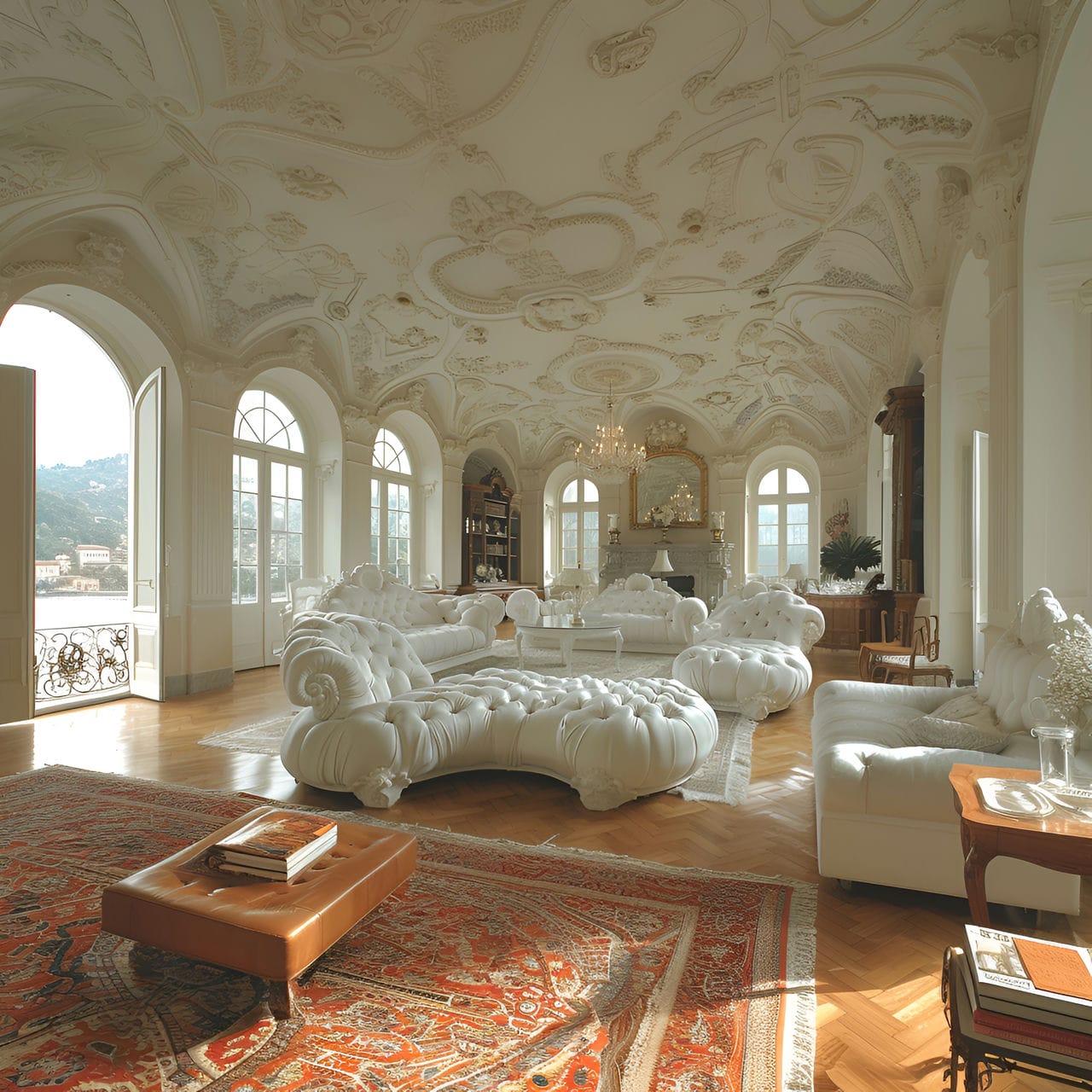
How much does it typically cost to renovate a parlor?
The average cost to refresh an existing 110 square foot (10 square meter) to 235 square foot (22 square meter) residential parlor falls between $3,000 (€2,700, £2,300) to $15,000 (€13,500, £11,400). Cosmetic updates like new paint, flooring, and window dressing replacements run closer to $3,000 (€2,700, £2,300). Structural changes like removing walls and adding custom built-ins or specialty lighting drive prices toward $15,000 (€13,500, £11,400). New parlor furnishings like sofas span $1,500 (€1,350, £1,150) to $4,000 (€3,600, £3,000), and tables or chairs range from $800 (€720, £600) to $3,500 (€3,150, £2,650). Multi-piece heirloom collections amass more. For contemporary estate parlors with designer architectural finishes, accent metal mesh walls, electronic partitions, and integrated ceiling details across dimensions exceeding 375 square feet (35 square meters), expect total transformation budgets beyond $30,000 (€27,000, £22,500). Typical parlor updates range from $3,000 (€2,700, £2,300) to $10,000 (€9,000, £7,600).
What factors affect the parlor renovation?
Listed below are the factors that affect the parlor renovation:
- Historical preservation: Historic preservation is a critical factor in a parlor renovation. This includes preserving moldings, fireplaces, and windows, which often require specialized restoration techniques and materials that align with the period of the house.
- Spatial limitations: Spatial limitations affect parlor renovations. Renovating such a space requires creative solutions to maximize functionality without compromising the room’s aesthetic or architectural integrity.
- Lighting considerations: Lighting considerations play a role in parlor renovations. This involves a combination of natural and artificial lighting, with the placement of fixtures and choice of bulbs impacting the room’s functionality and mood.
- Furniture and decor: Furniture and decor selection is crucial in a parlor renovation. The furniture should enhance the room’s elegance and comfort, while decor items like curtains, rugs, and artwork contribute to the overall aesthetic and thematic expression.
- Color scheme and materials: The color scheme and materials chosen for a parlor renovation significantly impact the room’s appearance and atmosphere. Homeowners must select colors and materials that reflect the room’s intended style, whether traditional, contemporary, or a blend.
- Budget constraints: Budget constraints are a significant factor in parlor renovations. The cost of materials, labor, and any specialized restoration or customization can quickly add up.
- Contractor and designer expertise: The expertise of contractors and designers affects the outcome of a parlor renovation. Hiring professionals experienced in working with similar spaces or styles can ensure high-quality results.
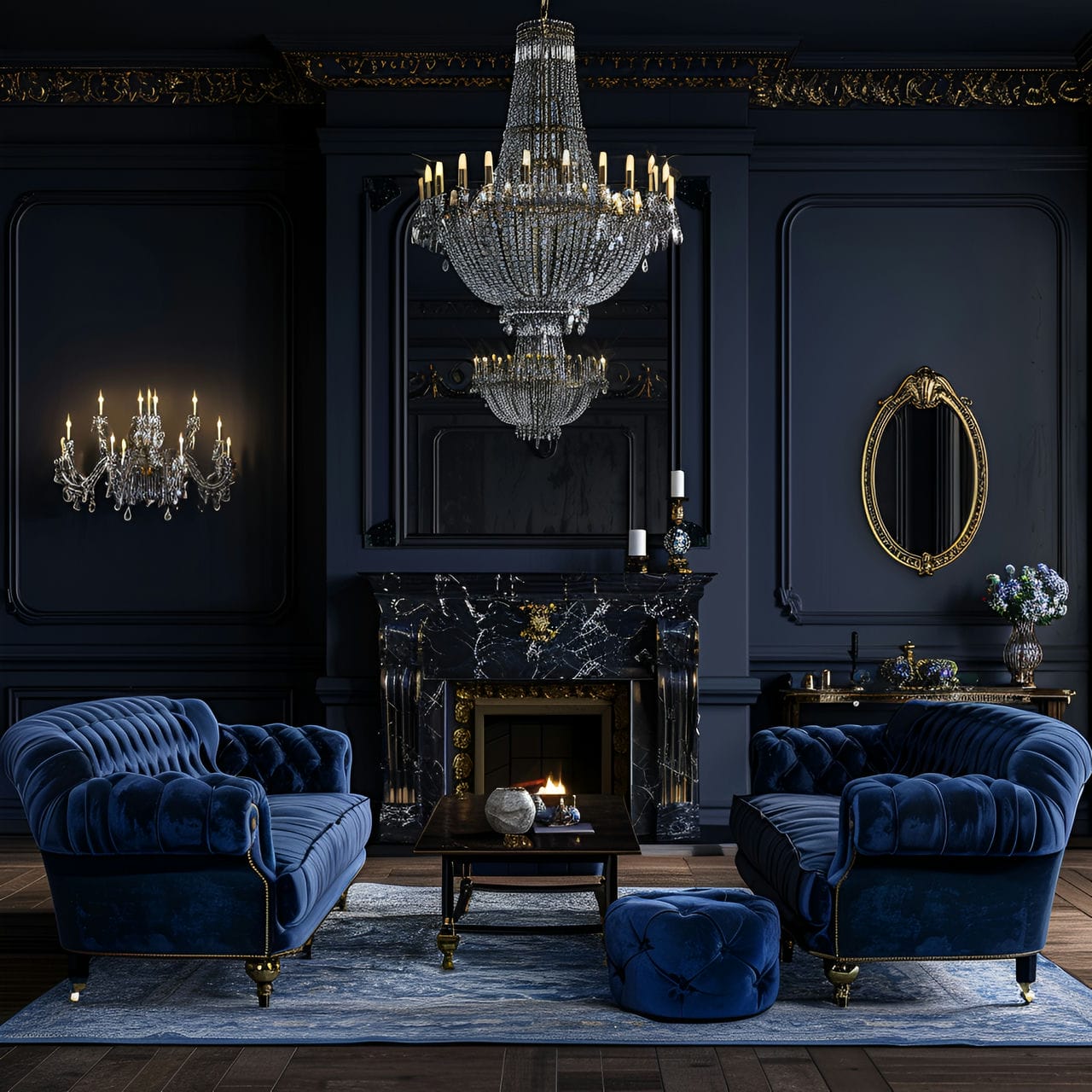
Is an architect required to renovate a parlor?
No, hiring an architect is not required to renovate a parlor, but it is highly advised to consider their expertise and services for more extensive or complex renovation projects. An architect’s knowledge is invaluable if the parlor renovation involves structural changes, such as removing walls, altering room layouts, or modifying the building’s structure. They can ensure the changes are pleasing, safe, and compliant with building codes. An architect’s expertise can bring ideas to life to maximize functionality and aesthetics for projects requiring attention to detail, custom designs, or a unique architectural vision. Architects can optimize energy efficiency and space utilization and create a cohesive design that complements the style of the home.
How can an architect help you upgrade a parlor?
Listed below are the ways that an architect can help an owner upgrade a parlor:
- Spatial planning: An architect can manage spatial planning for a parlor upgrade, ensuring efficient use of space while maintaining aesthetic appeal. They analyze the room’s dimensions and layout to create a functional design that maximizes space utilization.
- Lighting design: Lighting design is a crucial aspect where an architect can contribute to a parlor upgrade. They develop a lighting plan that enhances the room’s ambiance, combining task, accent, and lighting.
- Material and color selection: An architect assists in selecting materials and colors that align with the parlor’s intended aesthetic. They provide expertise on durable and suitable materials for flooring, wall treatments, and decorative elements, considering factors like light exposure, traffic, and maintenance.
- Custom furniture design: Custom furniture design is an area where an architect can add unique value to a parlor. They can design pieces that fit the specific dimensions and style of the room.
- Acoustics optimization: An architect can optimize the acoustics of a parlor, enhancing the room’s sound quality. This is important in spaces used for music or entertainment.
- Project management and contractor coordination: An architect provides essential project management and contractor coordination during a parlor upgrade. They oversee the project from conception to completion, ensuring all elements align with the design plan.
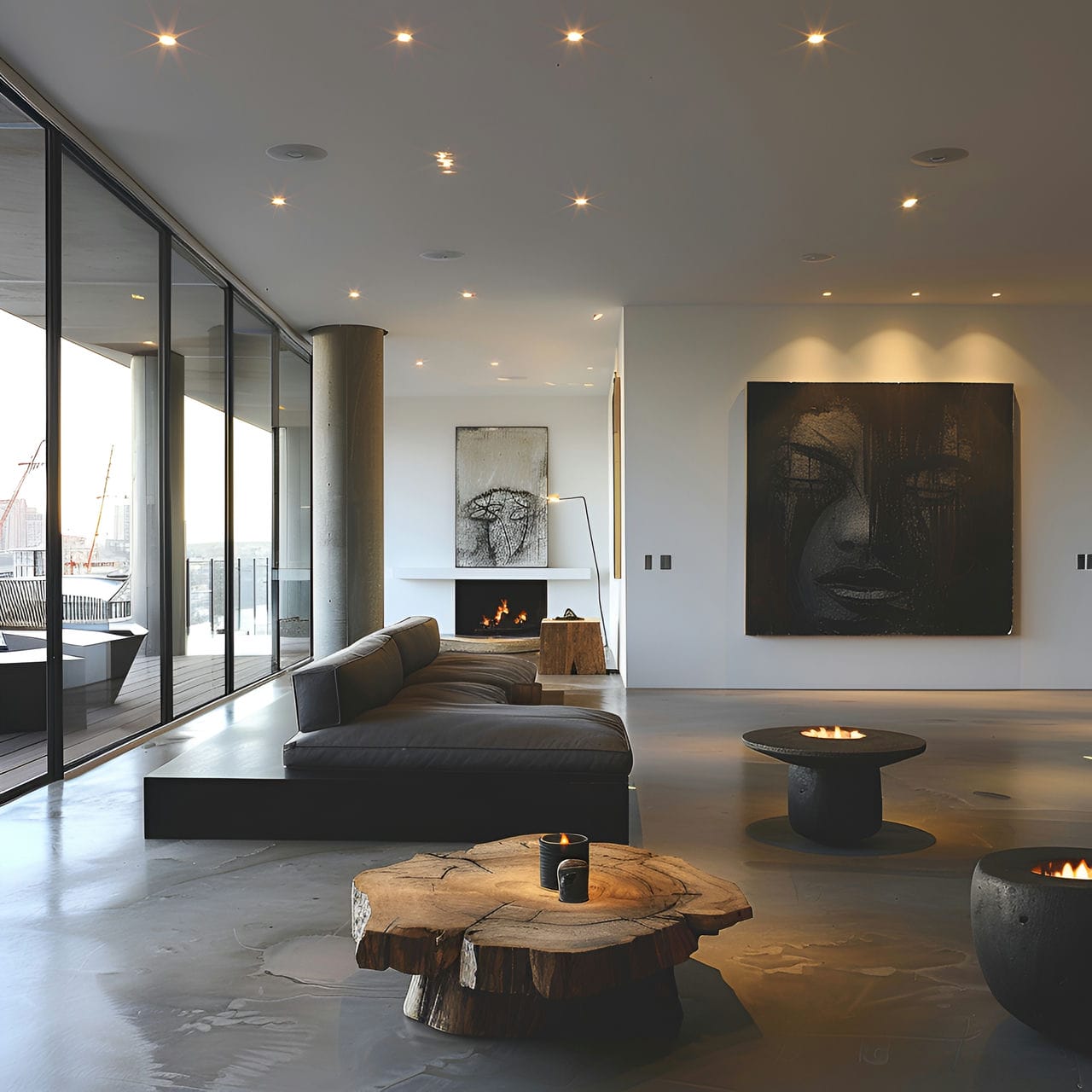
How much does it cost to hire an architect to renovate a parlor?
The average cost to hire an architect to design a residential parlor renovation ranges from $1,500 (€1,350, £1,150) to $5,000 (€4,500, £3,800) based on the scale and intricacy involved. Most architects charge $100 (€90, £75) to $175 (€155, £135) per hour. Refreshing a modest 110-square-foot (10-square-meter) parlor with simplified cosmetic updates and furniture rearrangements takes 10-15 hours, costing $1,500 (€1,350, £1,150). Reconfiguring a 215-square-foot (20-square-meter) parlor while incorporating structural changes like opening side walls for borrowed natural light or niche display cases requires 20-30 architectural hours averaging $3,000 (€2,700, £2,300). Top-tier interior designers tailoring high-end contemporary estate parlors exceeding 375 square feet (35 square meters) with architectural finishes, designer fixtures, and elaborate custom built-ins charge $5,000 (€4,500, £3,800) or more. Their extensive layouts demand 40+ coordinating hours on site. Typical parlor update concepts run $1,500 (€1,350, £1,150) to $3,000 (€2,700, £2,300), including some customization, while transformed floor match required work time between $3,000 (€2,700, £2,300) to $5,000+ (€4,500+, £3,800+).
Is it worth it to hire an architect to upgrade a parlor?
Yes, hiring an architect to upgrade a parlor is worth it. Architects bring valuable expertise in design, space planning, and structural considerations that can significantly enhance the outcome of the upgrade. They can ensure that the space is pleasing but also functional and efficient, making the most of the available area. Architects can handle complex projects that involve structural changes or extensive renovations. Their knowledge of building codes and regulations ensures that the upgrades comply with legal requirements, providing peace of mind. An architect’s attention to detail can result in a parlor that reflects style while maximizing the use of natural light, energy efficiency, and flow within the space.
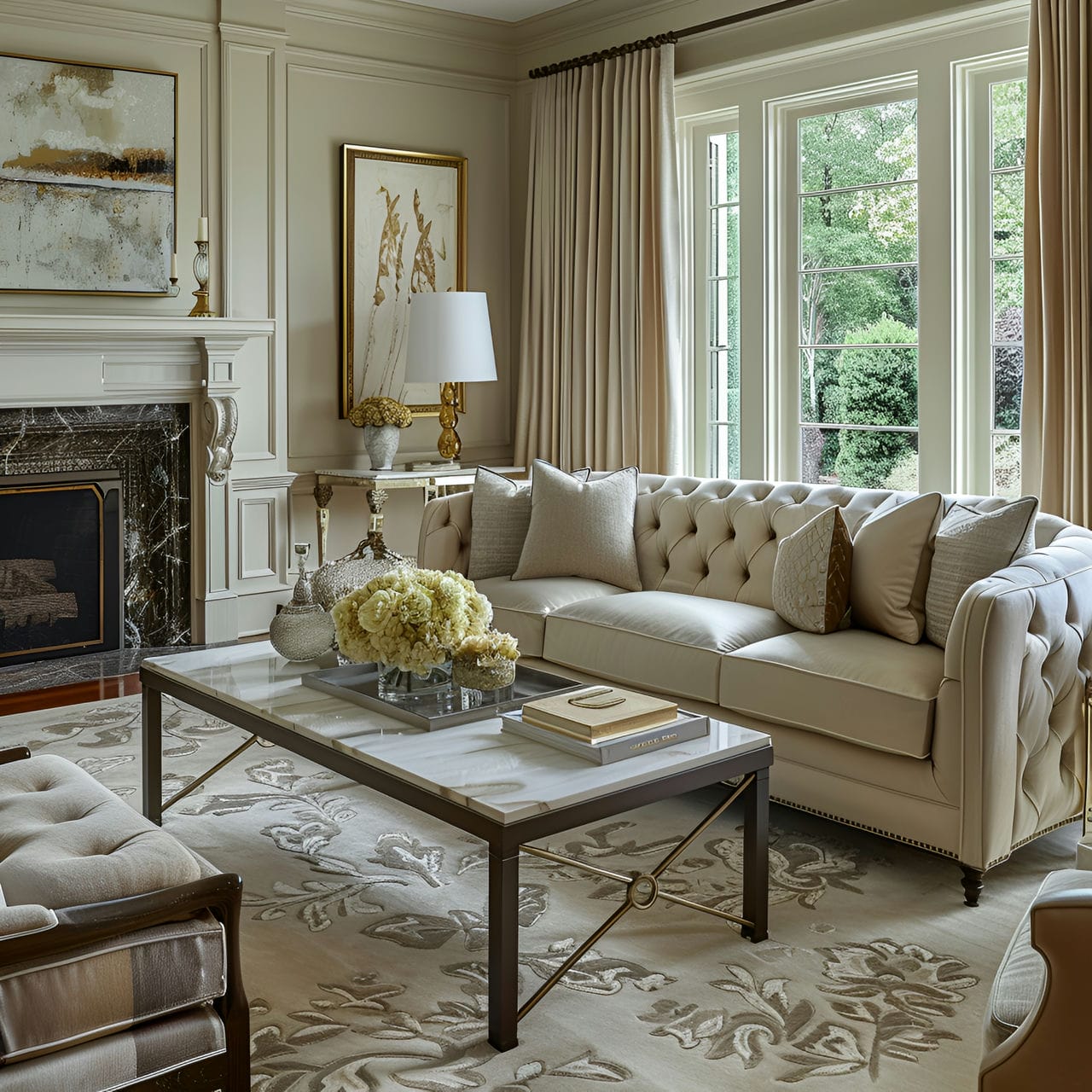
How long is needed to redecorate a parlor?
To redecorate the parlor, a timeframe of 1 to 8 weeks is needed. Firstly, for minor redecoration tasks, such as painting, updating furnishings, or changing decor, the process takes 1-2 weeks. This duration assumes prompt decision-making and immediate availability of materials. Secondly, if the redecoration includes moderate changes like installing new flooring, custom-built furniture, or detailed lighting fixtures, the timeline could extend to 2-4 weeks. This accounts for the additional time required for installation and potential delays in receiving custom or special order items. Lastly, for a comprehensive redecoration involving significant structural changes, such as wall modifications, intricate custom designs, or complete style overhauls, the process could take 4-8 weeks or more.
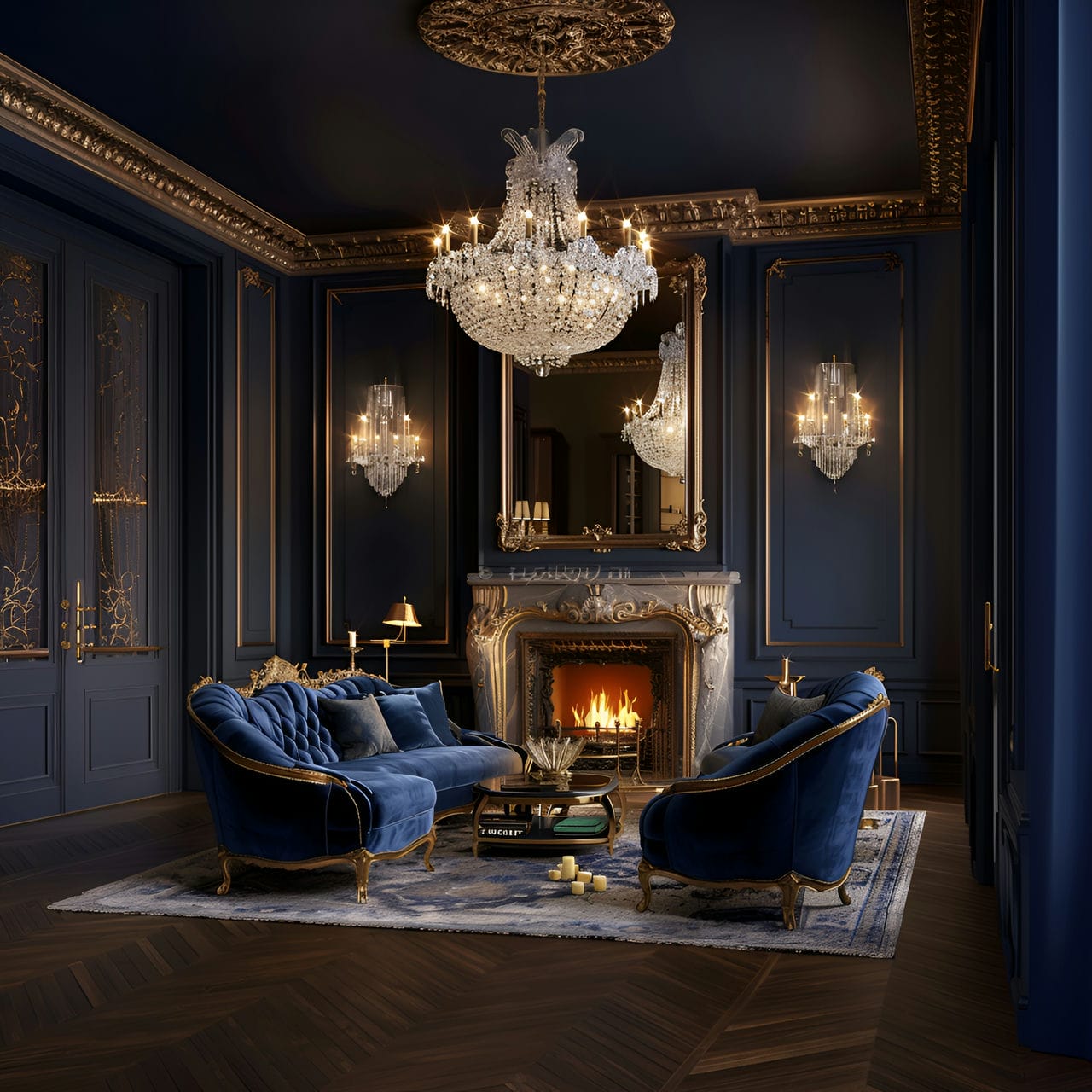
What are the struggles of the homeowner to redecorate a parlor?
Listed below are the struggles of the homeowner to redecorate a parlor:
- Budget Constraints: The most common struggle homeowners face when redecorating a parlor is budget constraints. Redecorating can be expensive, especially when considering the cost of new furniture, paint, flooring, and decor items.
- Space Limitations: The parlor is dealing with space limitations. The parlor may need to be more meaningful to accommodate all the desired furniture and decor elements. This requires careful planning and selection of items that will not only fit in the space but allow for comfortable movement.
- Finding the Right Furniture: Finding the right furniture that matches the homeowner’s style, fits within the space, and is within budget can be daunting. The furniture needs to be comfortable, durable, and pleasing.
- Choosing the Right Color Scheme: Choosing a suitable color scheme for the parlor is another struggle. Colors can impact the mood and feel of a room. Homeowners often find it challenging to choose a color scheme that complements the furniture and decor items.
- Time Constraints: Redecorating a parlor can be a time-consuming process. Planning the design and shopping for materials and furniture for redecorating requires a significant time investment.


